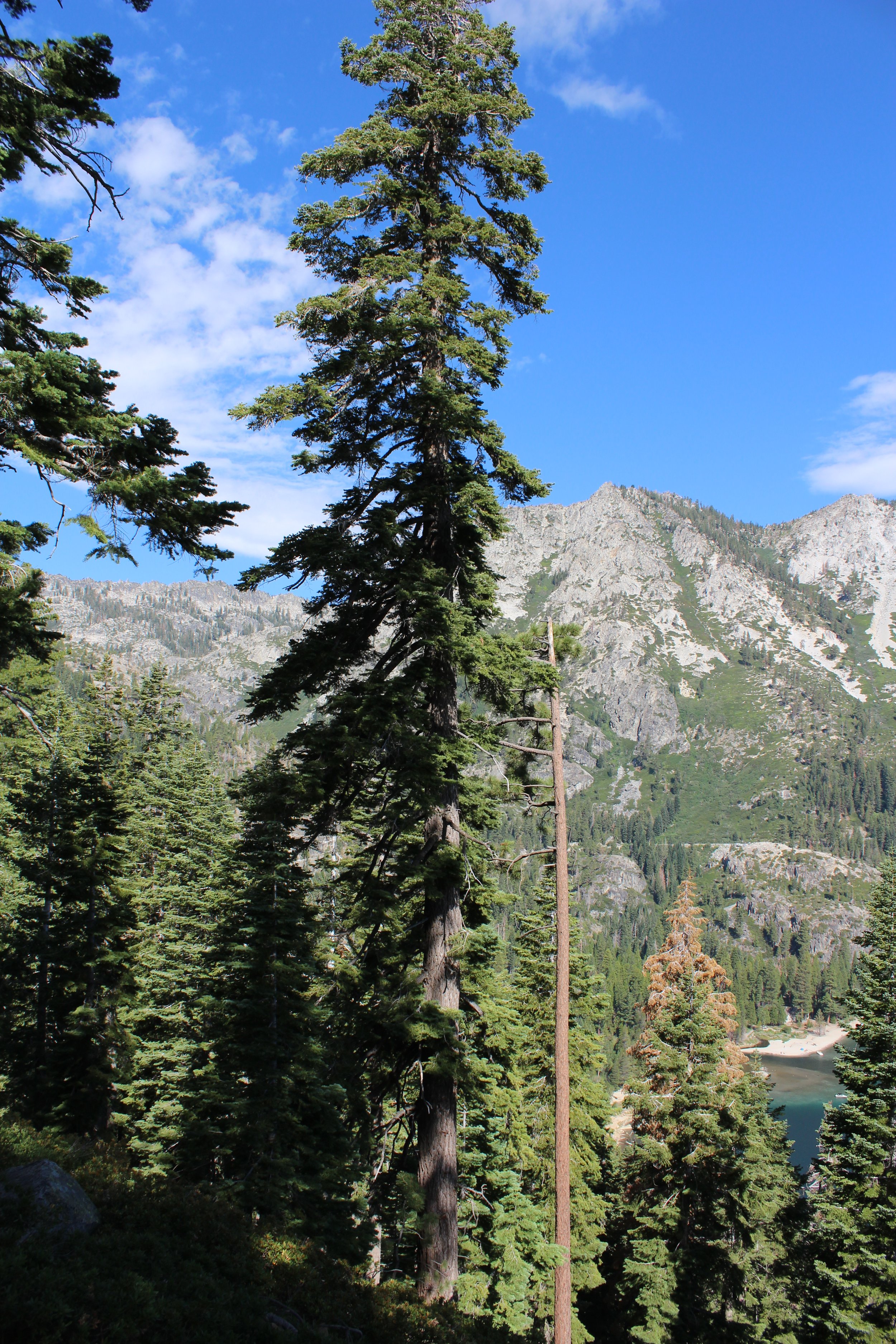After a recent trip to Lake Tahoe (July 2022), I had the opportunity to study the many trees there. There are multiple prominent species in the area, and firs are among them. Other prominent species include the Sugar Pine, Jeffrey Pine, Ponderosa Pine, Lodgepole Pine, California Incense-cedar, Sierra Juniper, and Quaking Aspen. There were a lot of Spruces planted as well in South Lake Tahoe.
There are reportedly several types of firs in the area of Lake Tahoe, such as White Fir (Abies concolor), Red Fir (Abies magnifica), and occasionally Douglas Fir (Pseudotsuga menziesii). I spent quite some time trying to differentiate the different firs (and pines). It is not always an easy task, especially when the foliage is way up in the sky, and the bark on mature trees can look similar to each other.
By looking at foliage on the ground and by more closely analyzing bark patterns, one can better differentiate the different species. One could look at cones as well should they be present.
Red Fir vs. White Fir
The names of these firs derive from the color of their bark, as Red Firs tend to have more reddish bark in maturity, and White Firs have a more grayish or dark grayish bark in maturity . They can be differentiated also by their leaves/needles. The White Fir’s leaves grow wider, flatter, and longer and can be a lighter color as well. Red Firs, on the other hand, have leaves/needles that grow all around the branches or twigs in thicker bunches, are darker, and have a hockey stick shape to them, as they bend growing off of the twig. Red Firs tend to grow at higher elevations, and White Firs at lower elevations. However, there are areas near the lake where they both grow at the same elevation. The bark in mature trees of both species take on a darker color, and in younger trees the bark in both takes on a very light gray or whitish color.
Admittedly, it can be hard to identify immediately which one is which, unless one has more experienced and more expert eyes. Below are pictures of various fir trees and, but I’ll avoid trying to identify them until spending more time around them in person.
I’ve read also that the bark of firs, White Fir specifically, may have medicinal properties, and the leaves/foliage have a citrusy smell when crushed. From one account, the needles or leaves of white firs are even edible.
Fir Trees of Tahoe















